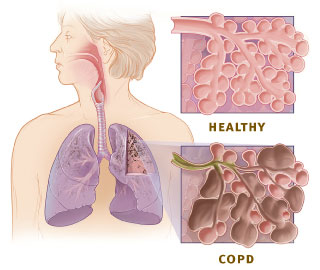I came across an article in The New York Times titled Heart Stents Still Overused is thought provoking and actually may be a fact too.
If somebody understands the actual mechanism of the heart arterial blockade, he/she should not be happy after inserting a stent in a narrowed artery as an elective procedure or in emergency.
A narrowed artery does not mean a blocked artery. Blocked artery usually needs clearing of the clot/thrombus and a stent; called angioplasty, percutaneous coronary intervention (PCI), coronary balloon angioplasty or percutaneous transluminal coronary angioplasty (PTCA).
But, should this assure patient of any further heart attack or myocardial infarction arising out of blockade in some other part of coronary arteries? The answer is definitely no. That is because the root cause of this blockade is not addressed only by stenting.
The thrombus formation or narrowing of coronary artery by so called deposit of bad fat, cholesterol is over simplification of the events leading to the infarction or death of some muscle of heart termed as Myocardial Infarction, in the down stream territory of a particular blood vessel.
The main cause may be the inflammation in the coronary arteries, which leads to atherosclerotic plaque formation, then rapture that leads to thrombus formation and ultimately to blockade.
Stenting after clearing the thrombus/clot by various available means is only to re-establish blood supply through that particular part/segment of the artery in question; and nothing beyond that.
There may be inflammation in many other parts of the arterial network in heart. The patient has to be clearly informed that he/she should to adhere to the advice of health care provider and use medications prescribed to suppress/halt the ongoing inflammation.
Again elective angioplasty may not be required at all in some cases, at least where the patient is able to manage himself.
While treating heart attack, the target should be how to reduce/halt inflammation in coronary arteries so that those can work properly without being used as foundation stone for further atherosclerotic plaque formation.
If somebody understands the actual mechanism of the heart arterial blockade, he/she should not be happy after inserting a stent in a narrowed artery as an elective procedure or in emergency.
 |
| PTCA |
A narrowed artery does not mean a blocked artery. Blocked artery usually needs clearing of the clot/thrombus and a stent; called angioplasty, percutaneous coronary intervention (PCI), coronary balloon angioplasty or percutaneous transluminal coronary angioplasty (PTCA).
But, should this assure patient of any further heart attack or myocardial infarction arising out of blockade in some other part of coronary arteries? The answer is definitely no. That is because the root cause of this blockade is not addressed only by stenting.
The thrombus formation or narrowing of coronary artery by so called deposit of bad fat, cholesterol is over simplification of the events leading to the infarction or death of some muscle of heart termed as Myocardial Infarction, in the down stream territory of a particular blood vessel.
The main cause may be the inflammation in the coronary arteries, which leads to atherosclerotic plaque formation, then rapture that leads to thrombus formation and ultimately to blockade.
Stenting after clearing the thrombus/clot by various available means is only to re-establish blood supply through that particular part/segment of the artery in question; and nothing beyond that.
There may be inflammation in many other parts of the arterial network in heart. The patient has to be clearly informed that he/she should to adhere to the advice of health care provider and use medications prescribed to suppress/halt the ongoing inflammation.
Again elective angioplasty may not be required at all in some cases, at least where the patient is able to manage himself.
While treating heart attack, the target should be how to reduce/halt inflammation in coronary arteries so that those can work properly without being used as foundation stone for further atherosclerotic plaque formation.
...
Click here to Subscribe news feed from "Clinicianonnet; so that you do not miss out anything that can be valuable to you !!
...






